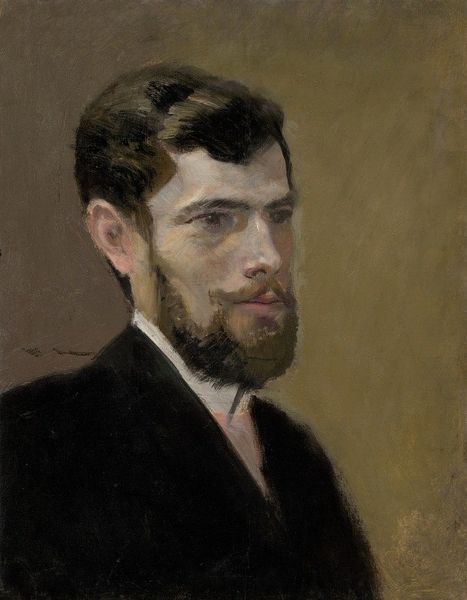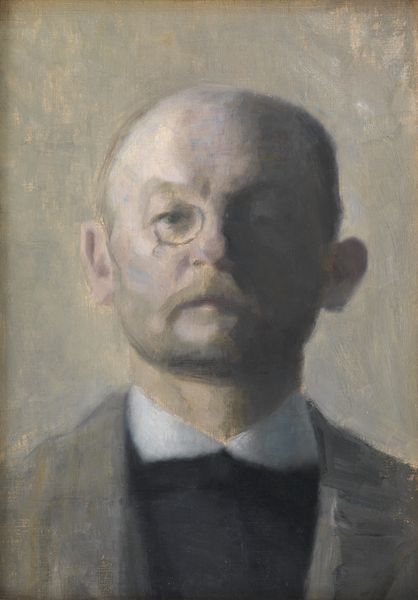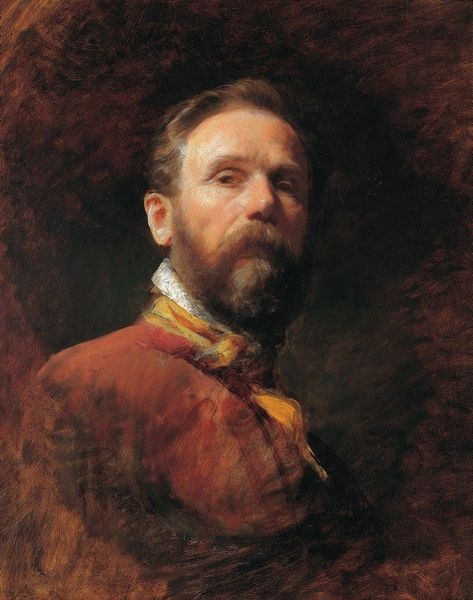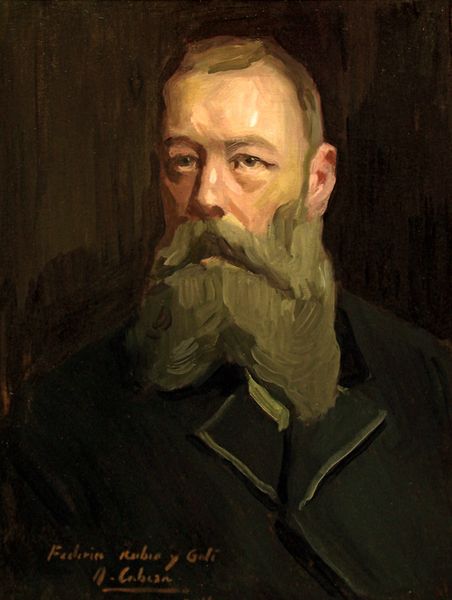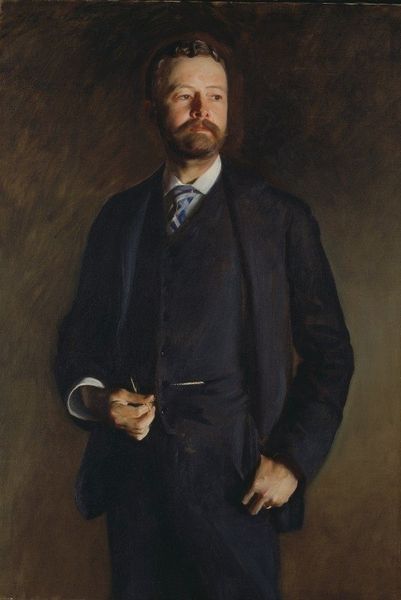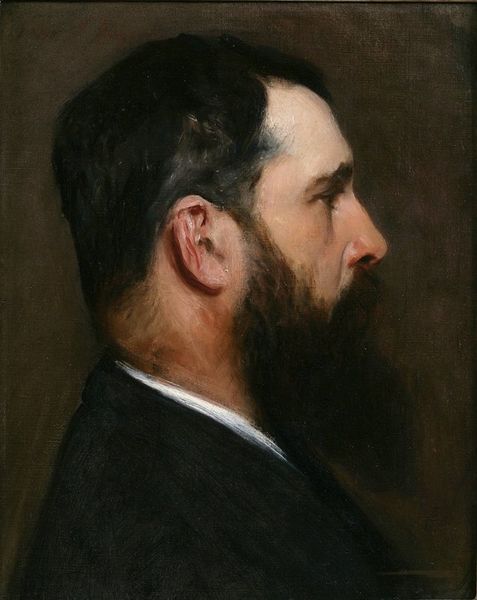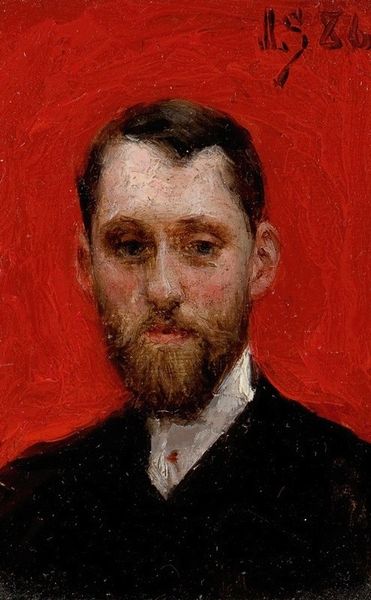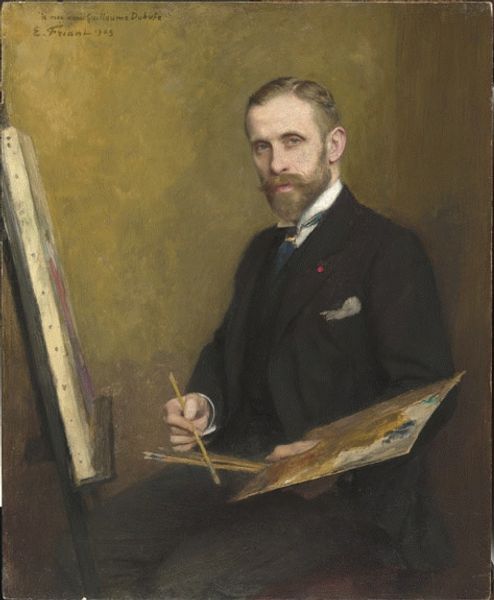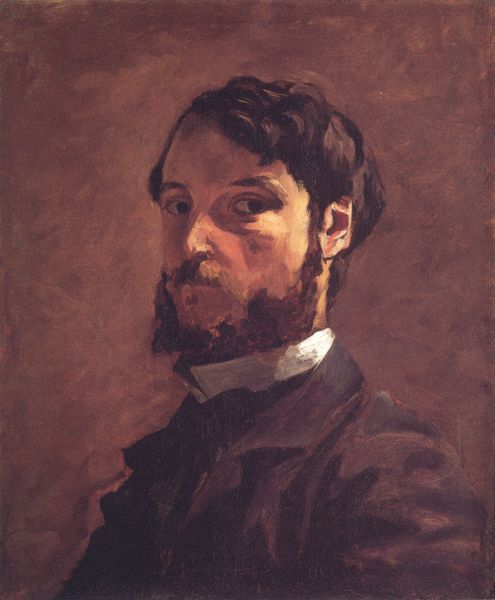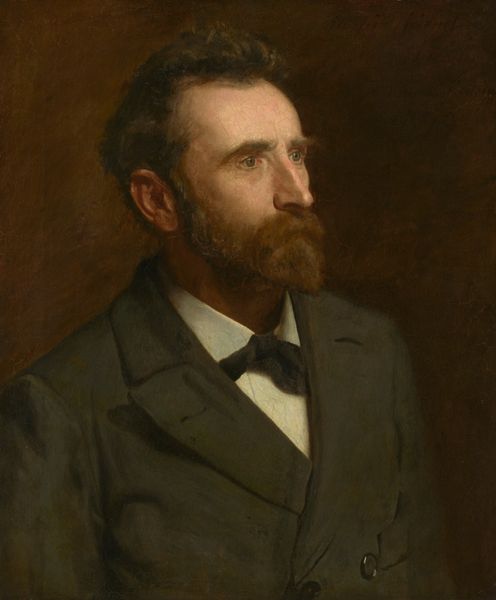
Copyright: Public domain
Curator: This is Edward Henry Potthast's Self-Portrait, created around 1925 using oil paint. It’s a remarkable piece that captures a moment of introspection in the artist's life. Editor: Immediately, that warm red background just leaps out at you! It creates this... I don't know, almost theatrical space around him, which I think intensifies his gaze. There's this sense of immediacy, as if he has just caught you looking at him. Curator: It's fascinating how Potthast employs impressionistic techniques in a portrait. You see it in the broken brushstrokes and the focus on light, especially around the face. He was, of course, a member of the American Impressionist movement, celebrated for depicting everyday scenes and the American landscape, rather than delving so deeply into portraiture. Editor: You know, there's something incredibly vulnerable about a self-portrait. The artist becomes both subject and object. Looking at the soft quality, those gentle, fleeting brushstrokes... there's a sense of hesitancy and transience in Potthast's impressionistic style. He looks kind of lost, as if to ask, “Who am I?” Curator: Considering the period, and the burgeoning interest in psychoanalysis, such self-examination was quite prevalent among artists. But, to circle back to your opening point, the fiery, red background gives the work this dramatic contrast and almost fights against that feeling. Editor: Yeah, that red is definitely a visual punch! It amplifies the effect. It creates a dialogue in itself. I can see that duality. Okay, now I get it. Curator: So, while the work shows the more common focus on aesthetic qualities of Impressionism, the choice to represent the self reflects a historical shift in our thinking, no? Editor: Absolutely. It makes you wonder, though... Was this an exercise, or was Potthast making a statement? Whatever his reasons, it really resonates. Curator: A great question that highlights the work’s enduring qualities. We hope you've found our brief exploration interesting. Editor: Absolutely, there's always something new to uncover when art holds a mirror up to the artist... and to ourselves, ultimately.
Comments
No comments
Be the first to comment and join the conversation on the ultimate creative platform.
